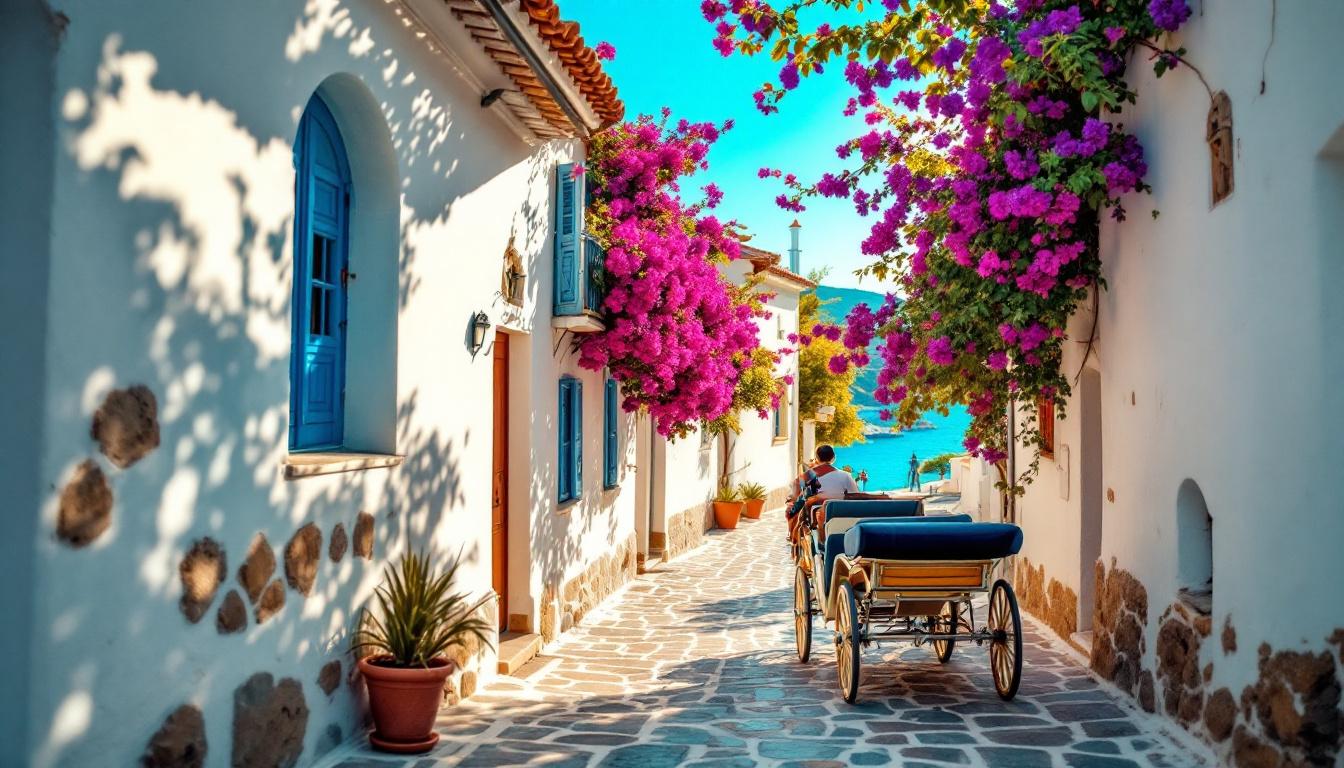The narrow cobblestone streets of Spetses echo with the gentle clip-clop of horse hooves, not car engines. This 27-square-kilometer Greek island in the Saronic Gulf maintains a fierce independence that 3,800 residents actively protect from the mass tourism destroying neighboring destinations.
While Santorini buckles under cruise ship crowds and Mykonos loses its soul to Instagram tourism, Spetses operates differently. The locals here don’t just limit cars—they’ve created an entire ecosystem designed to preserve what they call their “maritime sanctuary.”
After spending three weeks embedded with local families, fishermen, and the island’s cultural guardians, I discovered why these residents work so hard to keep their paradise from becoming another overcrowded Greek tragedy.
The car-free policy locals refuse to compromise
Horse carriages as cultural protection
Maria Konstantinou, whose family has operated horse carriages for four generations, explains the deeper purpose: “The horses aren’t just transportation—they’re our defense against speed tourism.” The deliberate pace forces visitors to slow down, notice details, and respect the island’s rhythm instead of rushing between photo opportunities.
Economic benefits of selective tourism
This transportation restriction naturally filters visitors. Day-trippers from cruise ships find Spetses inconvenient, while travelers seeking authentic experiences embrace the slower pace. Local businesses report 40% higher per-visitor spending compared to car-accessible islands, as guests stay longer and engage more deeply with local culture.
Maritime heritage protection strategies
The Armata festival as cultural anchor
Every September, locals reenact the 1822 naval battle that helped secure Greek independence. Captain Dimitris Laskos, whose ancestor fought in the original battle, coordinates the event: “We don’t perform for tourists—we remember for ourselves.” This authentic approach attracts history enthusiasts while deterring party tourism.
Boatyard preservation efforts
Traditional wooden boat construction continues at the Spetses boatyard, where master craftsman Yannis Tsakonas teaches ancient techniques. The island’s maritime museum showcases this heritage, but locals deliberately keep restoration workshops away from tourist routes, preserving the craft’s authenticity while sharing selected elements with respectful visitors.
Community resistance to mass tourism models
Accommodation limits and local ownership
Unlike Santorini, where foreign investment creates soulless resort complexes, Spetses maintains strict building height limits and prioritizes local ownership. Island council member Sophia Botassis notes: “We’ve seen what happens when communities lose control. Our zoning laws protect both architecture and social fabric.”
Selective marketing and visitor education
The island’s tourism board deliberately avoids mass-market promotion, instead partnering with cultural organizations and sustainable travel operators. Visitor guidelines emphasize respect for local customs, with gentle but firm enforcement of behavioral expectations that preserve the island’s contemplative atmosphere.
The economic model that sustains protection
Premium positioning over volume tourism
Rather than competing on price, Spetses focuses on experience quality. Average hotel rates run 30% higher than similar islands, but occupancy remains strong because visitors receive authentic Greek hospitality, not manufactured experiences. This economic model allows locals to maintain their lifestyle while sharing their culture selectively.
Local business networks and cultural preservation
Family-owned tavernas serve recipes passed down through generations, using ingredients from local gardens and boats. These establishments deliberately resist standardization, maintaining individual character that creates the authentic atmosphere mass tourism destroys. The island’s Eco Resort Network initiatives further support sustainable luxury experiences that benefit locals directly.
Spetses proves that Greek islands can prosper without sacrificing their souls. The residents here understand that true sustainability means saying no to some opportunities to preserve what makes their home special. Their horse carriages, maritime traditions, and selective approach to tourism create something increasingly rare: an authentic Greek island experience where locals and visitors coexist respectfully.
When planning your visit, remember you’re entering a community that has consciously chosen preservation over profit. Respect their pace, support local businesses, and understand that the magic of Spetses lies not in Instagram moments, but in genuine connections with a culture that refuses to be commodified.
Planning your respectful visit to Spetses
How do I get to Spetses from Athens?
Take a ferry from Piraeus port (2 hours) or high-speed catamaran (90 minutes). Book accommodations in advance, as the island limits visitor numbers through controlled lodging capacity.
What should I expect from the car-free policy?
Only service vehicles and motorcycles under 50cc are permitted. Horse carriages, bicycles, and walking are your transport options. This creates a peaceful atmosphere but requires patience and planning.
When is the best time to experience authentic Spetses?
Visit during shoulder seasons (May-June, September-October) for fewer crowds and better weather. The September Armata festival offers the most authentic cultural experience.
How can I support the local community?
Stay in family-owned accommodations, eat at traditional tavernas, and book activities through local operators rather than international platforms. Respect photography restrictions around sacred sites.
What makes Spetses different from other Greek islands?
The combination of car-free transportation, active maritime heritage preservation, and community-controlled tourism creates an increasingly rare authentic Greek island experience focused on cultural depth over surface attractions.
